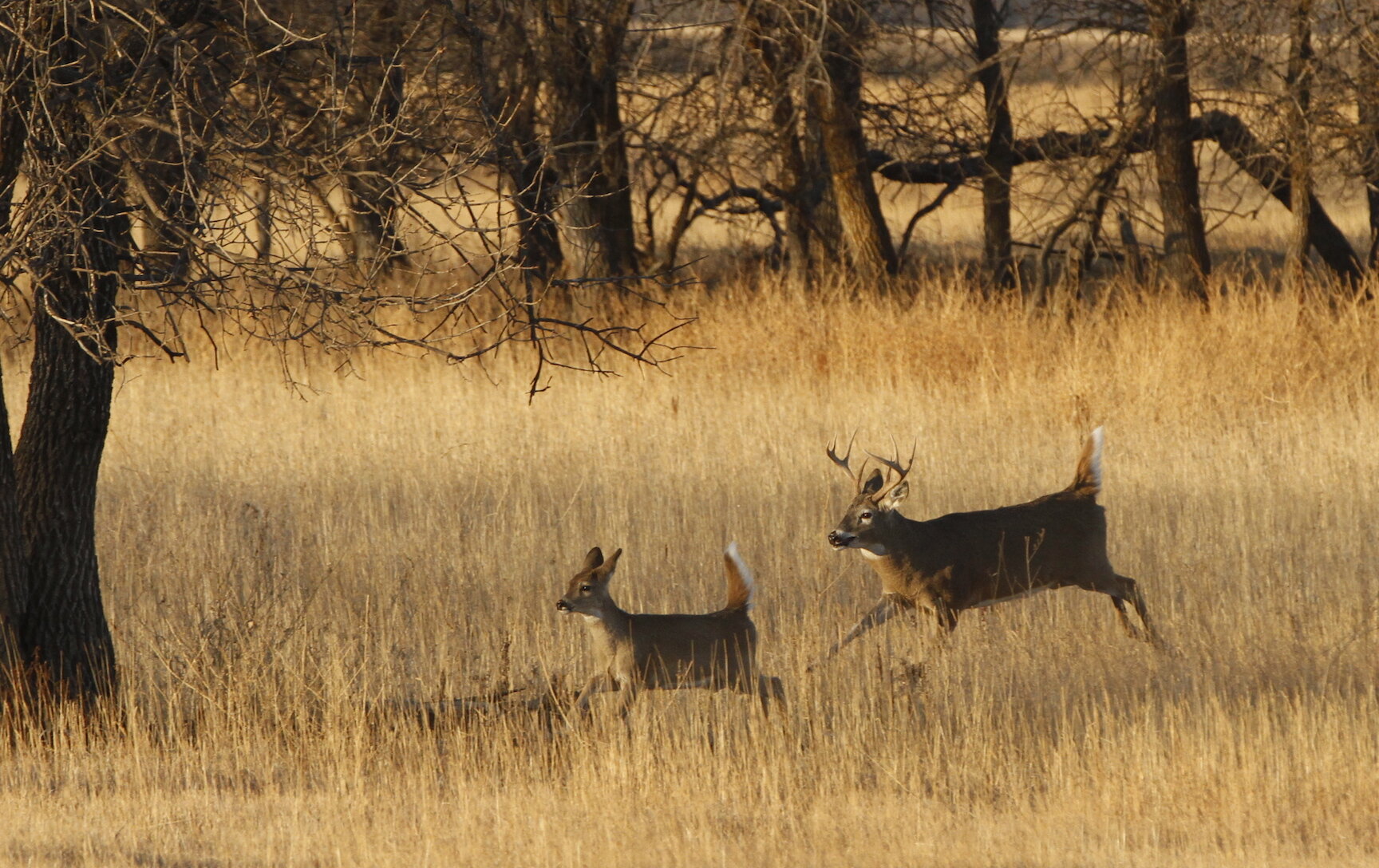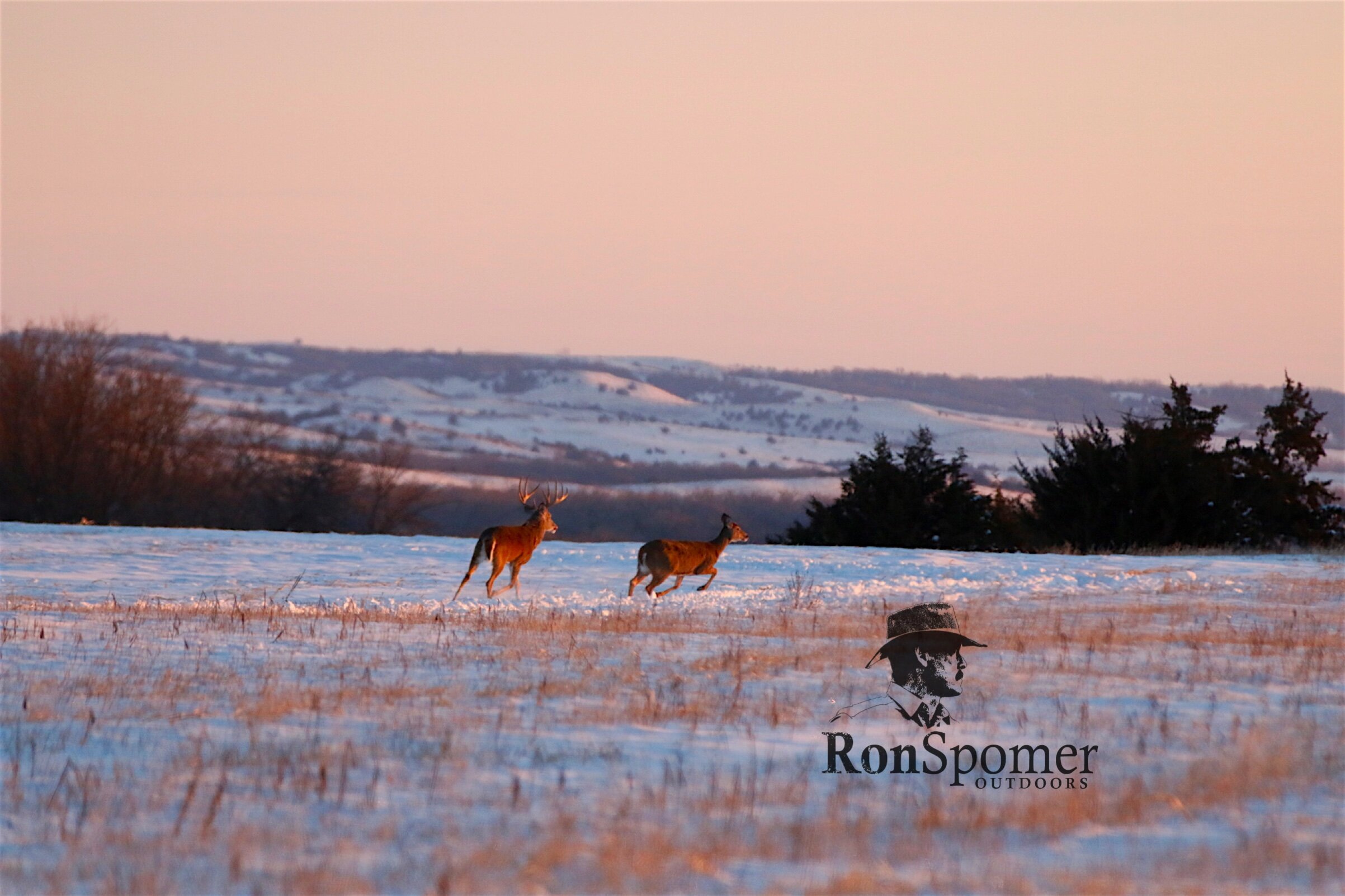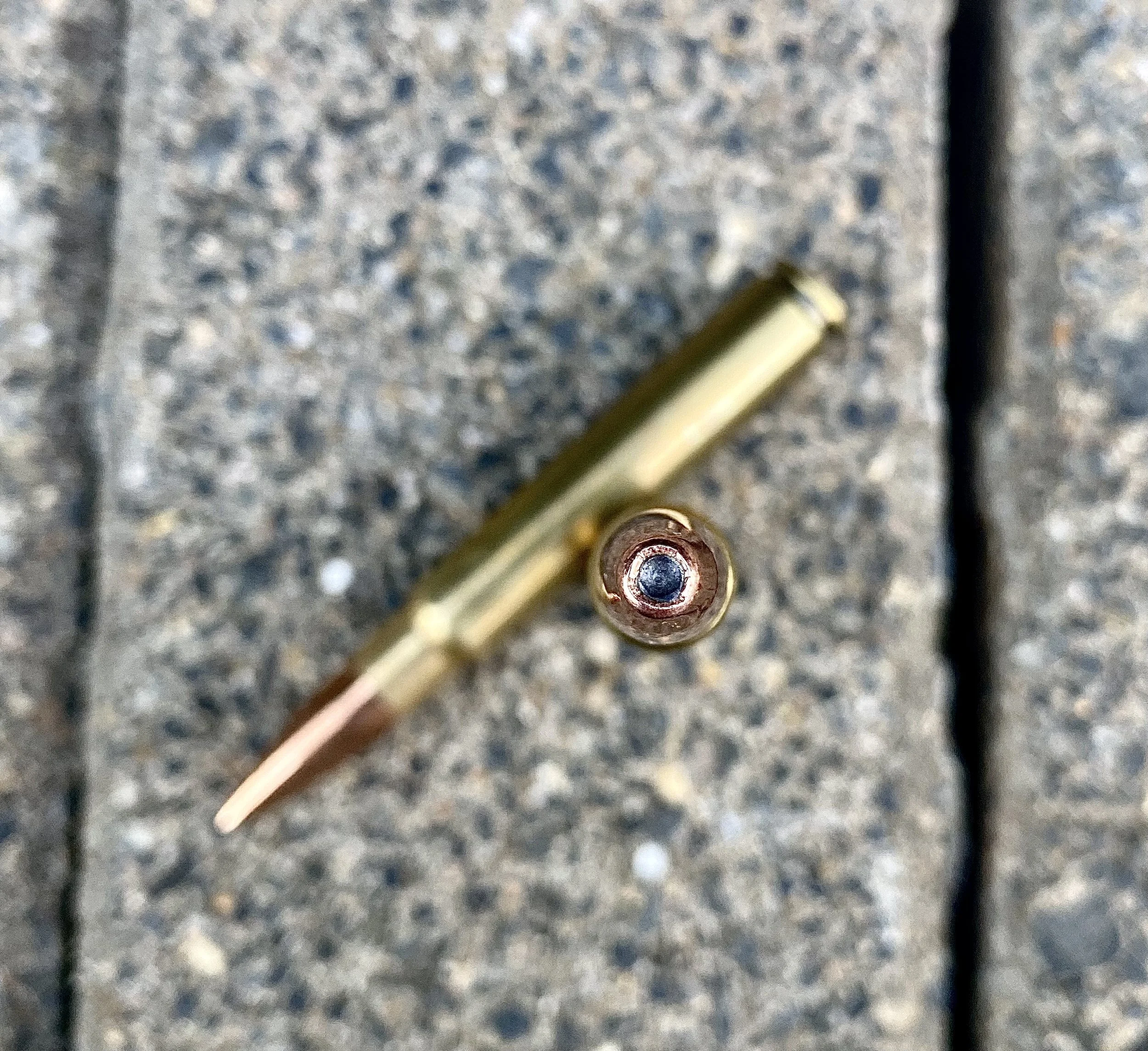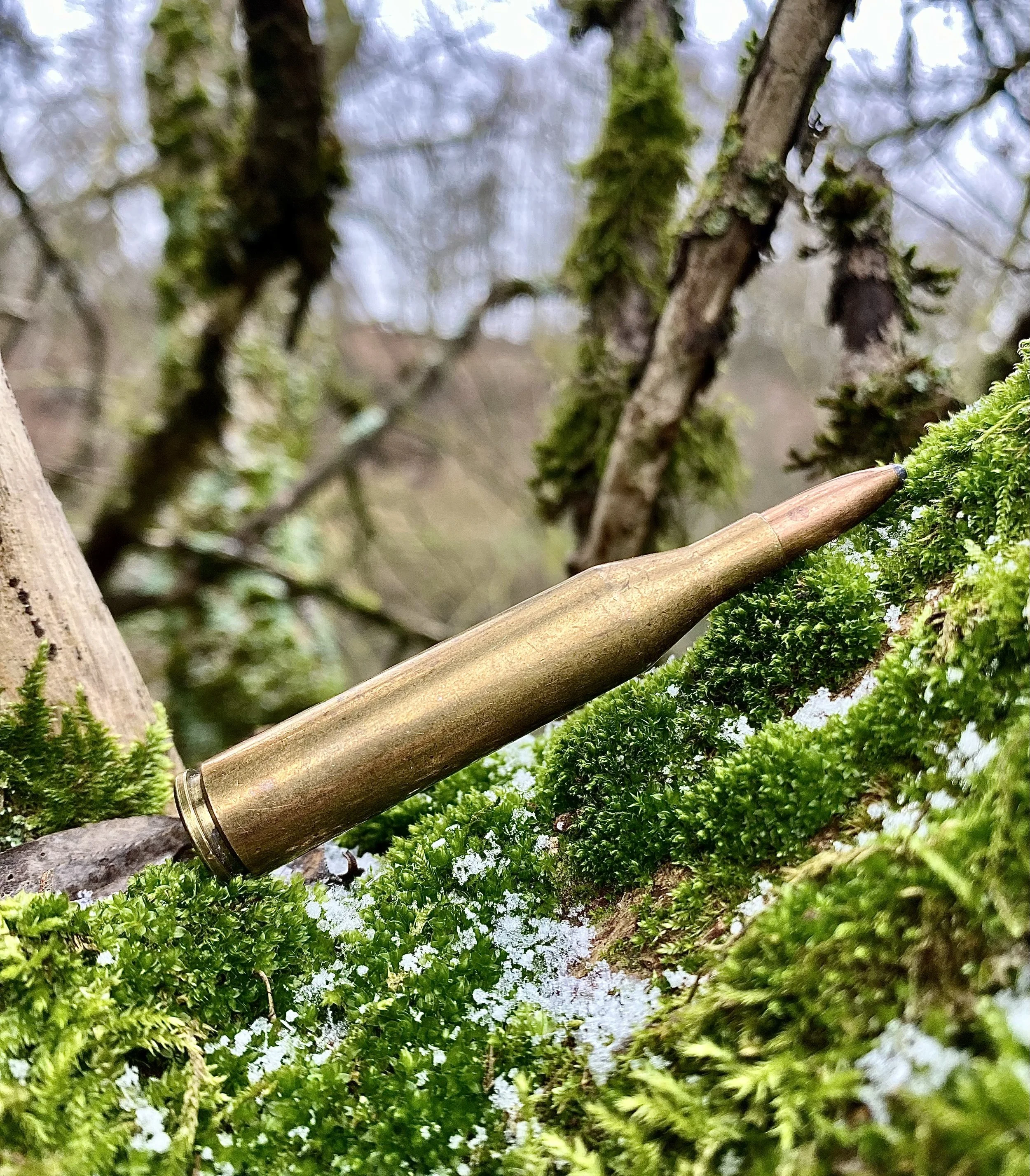Whitetail Lockdown Explained
During the lockdown period, bucks and does will bed in the strangest places.
The dreaded whitetail lockdown.
If you hunt whitetails you’ve probably heard whitetail lockdown used to describe the sudden disappearance of whitetails during the rut. Your daily sightings drop precipitously because the bucks are supposedly “locked down” with does. Really?
Well, yeah, really. Pretty much. Sorta. As explained fully in our phone app, Ron Spomer's Everything Whitetail, here’s what happens…
After June 21, the summer equinox, decreasing daylight hours signal whitetail bucks to begin increasing testosterone levels. Antlers stop growing and harden to bone by early September. Meanwhile, the same decreasing daylight has stimulated females toward gradually reaching their fertile estrus period.
By early November bucks have become increasingly restless and feisty. Sparring and wrestling bouts break out. Bucks begin wandering their home ranges, visiting old haunts and even distant places they may not have seen since the previous rut season. They are searching by sight, sound and especially by scent, for the first ripe doe.
This kind of active, scent-trailing buck is not often encountered during the locked down, breeding period.
Not all female whitetails reach estrus simultaneously, but in most regions the vast majority are ready to mate during a one to two week period in mid-November. This is part of a natural strategy called predator swamping. If all does drop their fawns during a short spring period, survival rates increase. Predators eat some fawns while others continue to grow. Eventually the survivors are big and fast enough to escape predation. Gestation for whitetails averages just under seven months, so a mid-November mating would lead to an early June birth. Count back about 201 days from peak fawning in your region to find your peak breeding date.
Another reason most does drop fawns during this short period is because that drop date matches the time when spring weather and forage growth optimize fawn survival. The deer don’t think about this or plan it. It’s just a bi-product of generations of deer breeding and fawning times and succeeding merely by surviving. If fawn survival were better at an earlier or later date, breeding seasons would slowly adjust accordingly.
Fawn survival is what determines rut dates everywhere. They must be born when conditions are optimal for survival and all at once to swamp predators.
In some parts of the south, breeding dates are later or even earlier than in the north. These are, again, a result of past fawn survival. August breeding would lead to fawn births in March, when spring is well underway in parts of the south. June births there probably miss the tender new growth or put fawns are risk of summer heat, insects or drought. Late breeding, say in late December, would see fawns dropped when summer rains create lush vegetation in desert mountains. Regardless, the rut in all parts of the country matches gestation periods to optimize birthing times.
Regardless when peak breeding occurs, each doe remains receptive for only a few days, so bucks have to compete or miss out on their chance to pass on their genes. That’s why they’re so frantic and active just before and as the first does reach estrus.
As that eagerly awaited day nears, buck activity peaks, each male canvassing the neighborhood for the first whiff of a hot doe. Once he detects it, the chase is on. Literally. If you’ve never seen a chase like this, wait until you do. That first doe might find herself pursued by a half dozen bucks! She encourages this by becoming more active herself, trolling through her home range to lay trails for as many suitors as possible. She wants lots of competition so she can choose the best buck. Contrary to what most hunters believe, this isn’t necessarily the biggest, toughest or strongest one with the biggest rack. It’s more often the one that keeps pace with the doe as she runs and romps. This proves his endurance, speed and overall health, attributes her fawns will need.
During the chase phase of the rut, bucks will chase does wherever they lead.
This “chase phase” in most areas starts about November 10 and continues for three or four days. After that most bucks have paired with a ripe doe and the roaming and chasing ends.
The lock down period has begun.
Classic pose. A breeding buck stands patiently while a doe reclines to keep him at bay. Keep from spooking the doe and the buck will stay or soon return.
Of course, no buck is literally locked anywhere. He’s just committed to a ripe doe until he successfully breeds her. During this 20- to 36-hour period, he goes no farther than the doe unless other bucks horn in on the honeymoon. Then a small chase might ensue, sometimes a major battle. In general, however, there are more than enough ripe females in any area to keep all bucks happily occupied, even the young ones. To ensure minimal disturbance, bucks often corner does (or perhaps the does lure them) into atypical bedding areas like bare pastures, vast crop fields, isolated thickets and other habitat areas rarely used by deer. Ah, a quiet honeymoon suite.
Some chasing still goes on as paired bucks and does negotiate their final contract, but for a day or two before she's ready to breed, a doe will minimize activity.
The upshot of all this is minimal deer movement, especially along traditional travel corridors and high use areas. Only when a buck has finished impregnating a doe will he again roam in search of another, and it usually doesn’t take long to find one. Sometimes she might be with another buck, in which case one of those knock down, drag out fights can settle the issue. More often, the hunting buck finds another mate and settles down for another day or two of minimal activity, prolonging the infamous whitetail lockdown.
So how do you hunt during this period? I wouldn’t do it by sitting my usual stands. Heck, I wouldn’t sit any stands. The deer are mostly NOT moving. So you should do the moving. This whitetail lockdown period is the perfect time to glass and stalk or still-hunt as cover dictates. Get the wind in your favor and work through any and all cover, especially atypical cover. Look for ears and antlers. Expect to find bucks bedded near or standing near their bedded does. A female whitetail will often lay for hours just to keep the buck from pestering her until she’s ready to mate, enhancing the whitetail lockdown effect.
Here’s a tip that could help you tag a locked down buck: Bucks with does are reluctant to leave, so they don’t necessarily spook as easily as usual. I’ve had old bucks pin me down, yet remain standing as I jockeyed into a clear shooting lane. I’ve also spooked them only to see them quickly return. As long as you don’t spook that bedded doe, the buck will stay or come back. The doe herself is less likely to spook because she knows if she gets up the buck with harass her. Again, more reasons why the whitetail lockdown is the perfect time to move and hunt, not sit and wait.
I found this buck bedded with an estrus doe far out in a bare pasture. Rifle is Holland Custom Rem. 700 in 22-250 Ackley Imp. with 8" twist barrel shooting 60-grain Nosler Partition. Bullet broke shoulder, spine, pelvis and kept going.
# # #


















